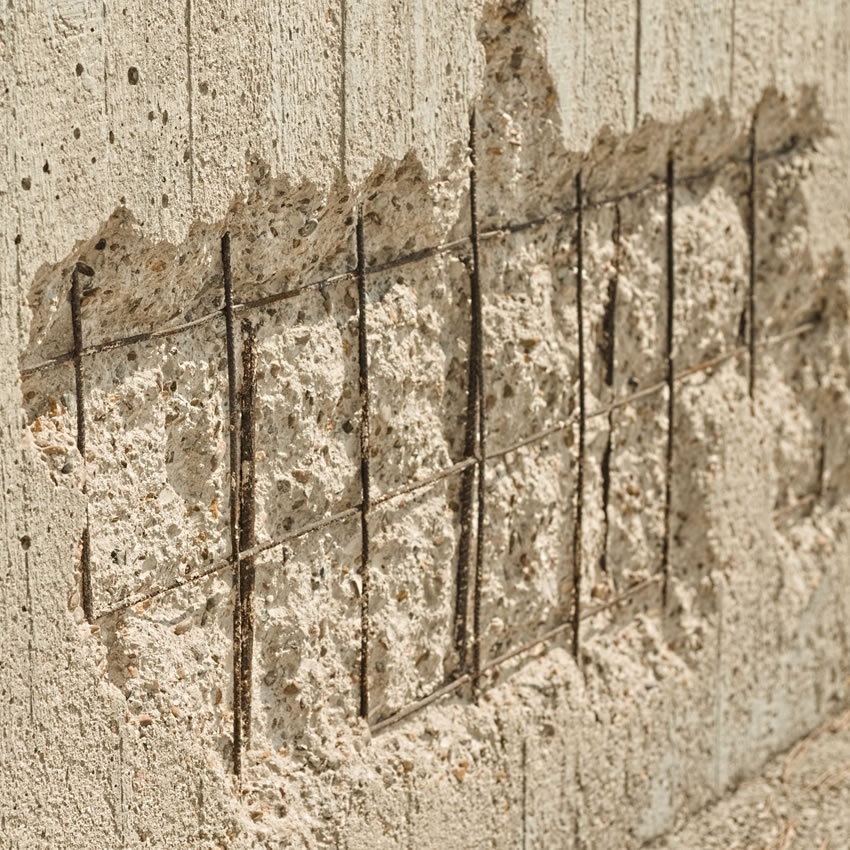Concrete Cancer
Concrete structures often incorporate steel reinforcement, typically in the form of steel bars or mesh, to provide tensile strength to the concrete, which is inherently weak in tension. When moisture, oxygen, or chloride ions penetrate the concrete and reach the steel reinforcement, a chemical reaction called "corrosion" can occur.

Concrete structures often incorporate steel reinforcement, typically in the form of steel bars or mesh, to provide tensile strength to the concrete, which is inherently weak in tension. When moisture, oxygen, or chloride ions penetrate the concrete and reach the steel reinforcement, a chemical reaction called "corrosion" can occur. This corrosion process causes the steel to rust, and as rust forms, it expands, creating internal pressure within the concrete. This expansion can lead to cracks, spalling, and the delamination of the concrete's surface, giving rise to the term "concrete cancer."
The key factors contributing to concrete cancer include:
- Exposure to Moisture: Water infiltration into the concrete is a primary factor that triggers the corrosion process.
- Oxygen Availability: Oxygen is necessary for the oxidation of iron in steel, which leads to rust formation.
- Chloride Ions: Chlorides, often found in saltwater or de-icing salts, can accelerate the corrosion process by breaking down the protective oxide layer on the steel.
- Carbonation: Carbon dioxide in the atmosphere can penetrate the concrete and lower its pH, which can also accelerate the corrosion of steel.
Concrete cancer can compromise the structural integrity of buildings and other concrete structures, leading to safety concerns and costly repairs if left untreated.
To address concrete cancer, remediation typically involves:
- Removing and replacing the corroded concrete.
- Treating the exposed steel reinforcement with corrosion inhibitors or coatings.
- Applying protective coatings or sealants to the repaired surface to prevent future corrosion.
Preventive measures, such as proper design, construction techniques, and regular maintenance, can help reduce the risk of concrete corrosion and prolong the lifespan of concrete structures. Inspections and early intervention are essential to address any signs of concrete cancer before it leads to more significant structural problems.


